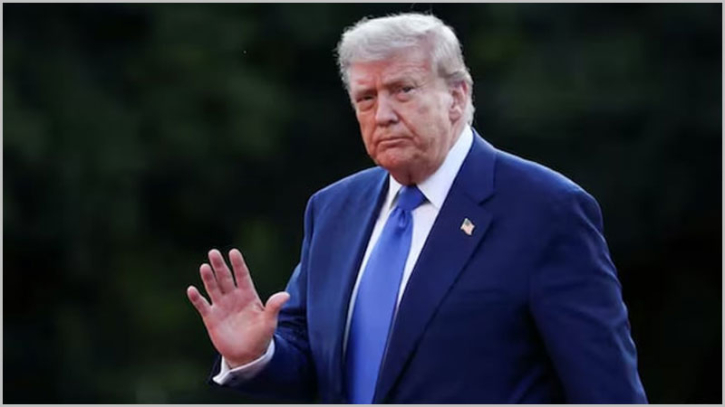Trump says ‘billions of dollars' now flowing into US after tariff deadline

US President Donald Trump has claimed that billions of dollars are “flowing” into the United States just minutes before the president’s new tariffs went into effect.
Trump doubled down on his trade war last week, unveiling new rates between 10% to 41% on goods from more than 90 countries.
After ordering a week-long delay on most tariffs just before his self-imposed deadline expired on August 1, the president's rates took effect just after midnight on Thursday.
“It’s midnight!!!,” the president declared on Truth Social in block capitals at 11.58 p.m. on Wednesday. “Billions of dollars in tariffs are now flowing into the United States of America.”
About 15 minutes earlier, Trump appeared to relish imposing new duties on countries that he said “have taken advantage” of the U.S. for years while “laughing all the way.”
Trump has repeatedly touted tariff revenues since he began ratcheting up import taxes on foreign goods on so-called “Liberation Day” in April.
Over the weekend, the president said that tariff revenues were bringing in “much more money” into the U.S. than the “country has ever seen.”
Last month, the U.S. government collected almost $30 billion in tariff revenue, according to the Treasury Department – a 242% jump compared to last July.
Since imposing an initial round of 10 percent baseline tariffs across most goods in April, the government has collected around $100 billion in tariff revenue, more than triple the amount collected over the same four-month period last year.
While the White House believes the measures could reset the global trading order, some economists are more skeptical, warning that the levies have rattled financial markets and could leave U.S. consumers bearing the brunt of higher costs.
U.S. Customs and Border Protection began collecting the higher tariffs one minute past midnight on Thursday after months of suspense and frantic negotiations with major trading partners.
A 10% baseline rate was applied to countries that run a trade surplus with the U.S, including the United Kingdom and Australia.
The new tariffs on U.S. imports begin at 15%– a rate faced by Bolivia, Iceland, and Nigeria, among many other nations.
Other nations, like Taiwan, have a 20% tax applied to items exported to the U.S.
Some of the highest new rates, reaching 50 percent, apply to imports from Brazil. Trump framed the duty as a punitive tax in response to the South American nation’s decision to prosecute his political ally, former Brazilian President Jair Bolsonaro.
India also faces a potential 50% tariff, as the U.S. pressures the nation to cease oil purchases from Russia. Trump has warned he could take similar action against other nations, using trade as an economic weapon to punish countries maintaining ties with Russia amid its ongoing offensive in Ukraine.
Trump has yet to announce whether he will extend an August 12 deadline for reaching a trade agreement with China that would reinstall earlier threats of tariffs amounting to a staggering 245%.
Some key U.S. trading partners brokered a deal – including the 27-member European Union trading bloc, Japan, and South Korea – cementing their tariffs at 15% to 20%.
In a blow to Canada last Thursday, Trump signed an executive order raising tariffs on Canadian imports to 35% for goods deemed non-compliant with the U.S.-Mexico-Canada Agreement, citing Canada’s failure to curb fentanyl smuggling across the border.
The president announced earlier in the day that he would maintain a 25% tariff on Mexico for another 90 days following a phone call with President Claudia Sheinbaum.
On Wednesday, Trump threatened to impose a 100% tariff on some semiconductors. He still plans to impose additional tariffs on foreign pharmaceutical products.
.png)




